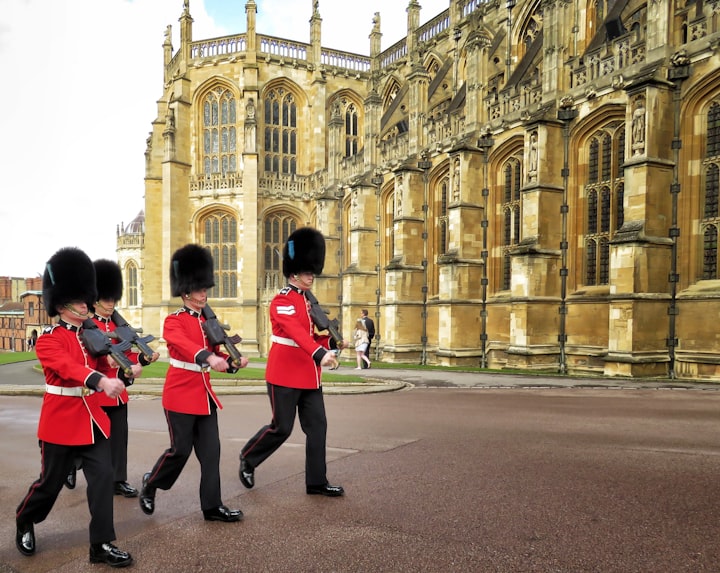"From Conquest to Coronation: A Millennium of England's Royal Family"
"Tracing the Tapestry of Power, Prestige, and Resilience"

The history of the royal family in England spans over a thousand years, encompassing a rich tapestry of triumphs, tragedies, and transformations. Let's embark on a journey through time to explore the fascinating history of the English monarchy.
The Early Medieval Period:
The story begins in the early medieval period with the establishment of Anglo-Saxon kingdoms in England. The first recognized King of England was Æthelstan in 927, who unified the various kingdoms under his rule. Subsequent rulers, such as Edgar the Peaceful and Edward the Confessor, played crucial roles in shaping the kingdom. However, the Norman Conquest of 1066, led by William the Conqueror, brought profound changes to England and established a new royal dynasty.
The Norman and Plantagenet Dynasties:
William the Conqueror became the first Norman king of England, marking the beginning of the Norman Dynasty. The following centuries saw the rise of the Plantagenet Dynasty, with notable monarchs such as Henry II, Richard the Lionheart, and King John. The Plantagenet era also witnessed significant events like the signing of the Magna Carta in 1215, which limited the monarch's powers.
The House of Tudor:
The Tudor dynasty emerged in 1485 when Henry Tudor, also known as Henry VII, seized the throne. His reign brought stability and marked the end of the Wars of the Roses. Henry VIII, perhaps the most famous Tudor monarch, is known for his multiple marriages and the English Reformation, which established the Church of England. His children, Edward VI, Mary I, and Elizabeth I, each left their indelible marks on English history.
The Stuarts and the Glorious Revolution:
With the death of Elizabeth I in 1603, the Tudor line came to an end, and the Stuart dynasty began with the coronation of James VI of Scotland, who became James I of England. The Stuart period saw significant religious and political tensions, leading to the English Civil War in the 1640s. The execution of King Charles I in 1649 resulted in the establishment of the Commonwealth under Oliver Cromwell. However, after a period of republican rule, the monarchy was restored in 1660 with Charles II.
The Glorious Revolution of 1688 saw William III of Orange and his wife, Mary II, ascend to the throne, marking a shift towards constitutional monarchy. The Bill of Rights, passed in 1689, affirmed the supremacy of Parliament and established important civil liberties.
The Hanoverians and the Victorian Era:
The 18th and 19th centuries witnessed the reign of the Hanoverian monarchs. George I, who came from the German House of Hanover, became king in 1714. The reign of George III saw the American Revolutionary War, and subsequent Hanoverian monarchs faced various challenges, including the Napoleonic Wars.
Queen Victoria's lengthy reign, from 1837 to 1901, marked the zenith of the British Empire and the Victorian Era. It was a period of industrialization, social reforms, and imperial expansion. Queen Victoria's marriage to Prince Albert brought about significant changes, including the establishment of a more stable and settled royal family.
The Modern Era:
The 20th century brought both world wars and a shifting role for the monarchy. George V, the grandfather of Queen Elizabeth II, led the country through World War I. His son, Edward VIII, abdicated the throne in 1936 to marry Wallis Simpson, an American divorcée. His younger brother, George VI, took the throne and became a symbol of British resilience during World War II.
Queen Elizabeth II ascended to the throne in 1952 and has become the longest-reigning monarch in British history. Her reign has witnessed significant societal changes and challenges, including the end of the British Empire, the Troubles in Northern Ireland, and the transformation of the Commonwealth.
In recent years, the royal family has experienced its own share of ups and downs, with notable events such as the wedding of Prince Charles and Lady Diana Spencer, Diana's tragic death in 1997, and the marriages of Prince William and Prince Harry.
Today, the royal family in England continues to play a ceremonial and symbolic role, representing the nation both domestically and internationally.





Comments
There are no comments for this story
Be the first to respond and start the conversation.